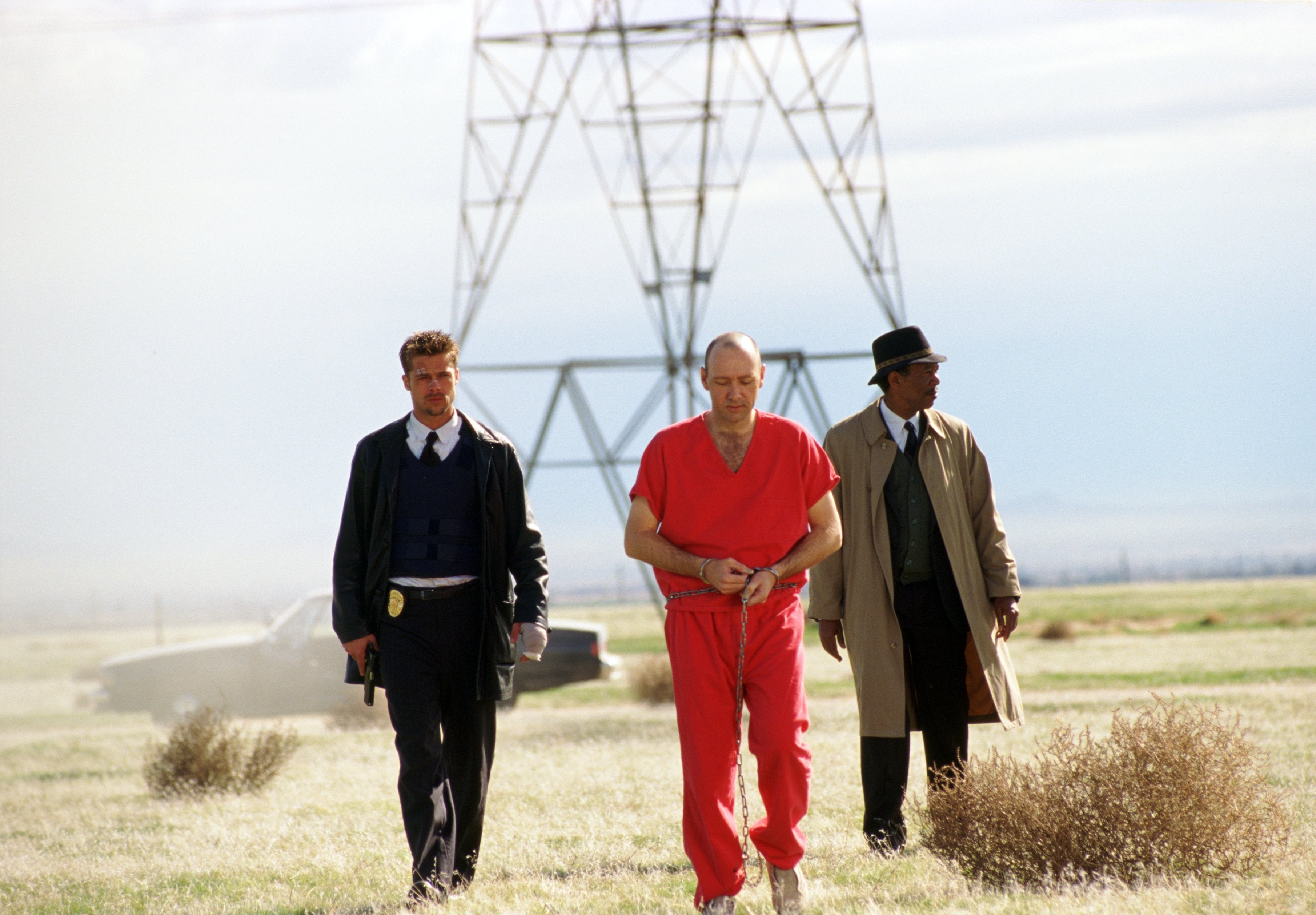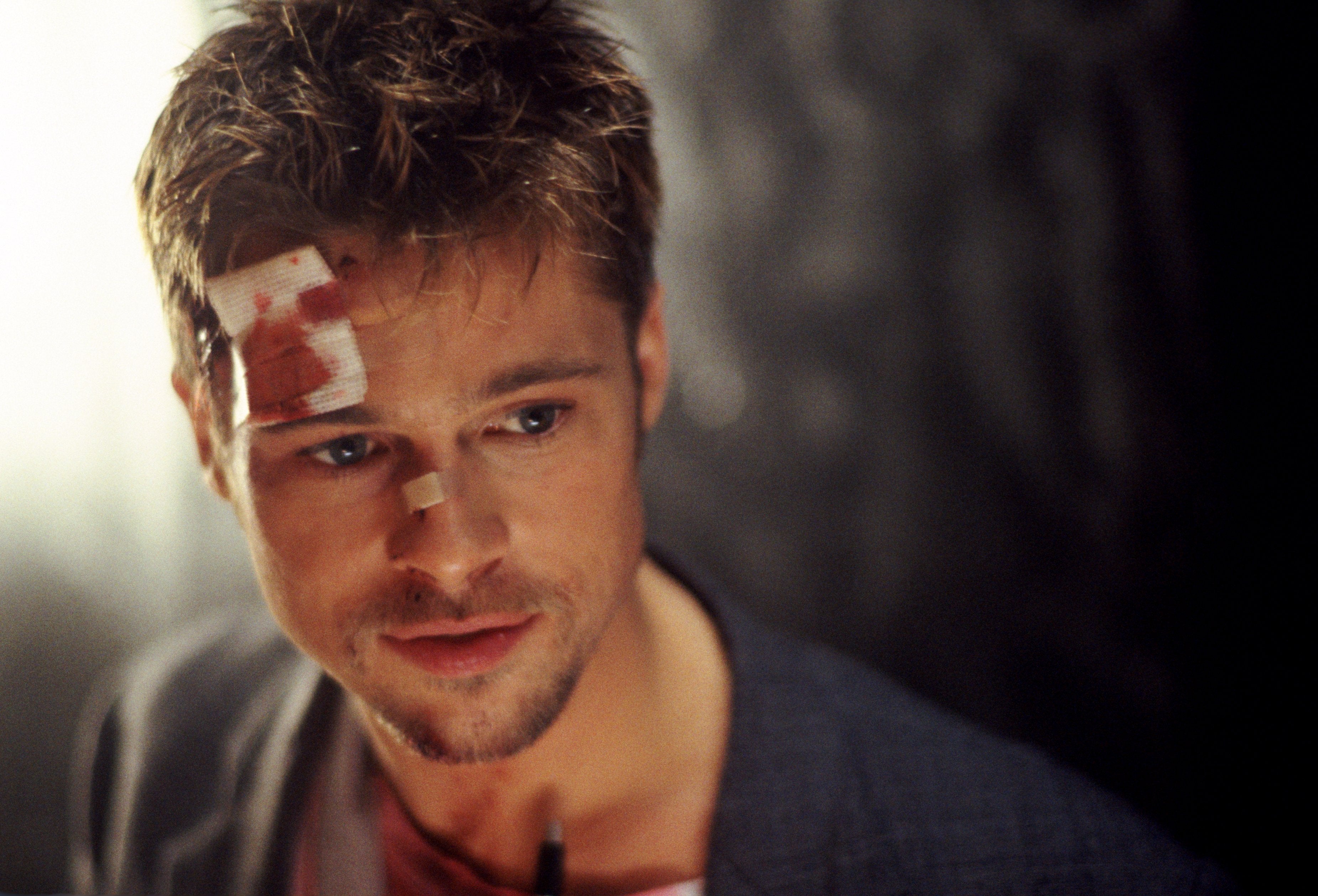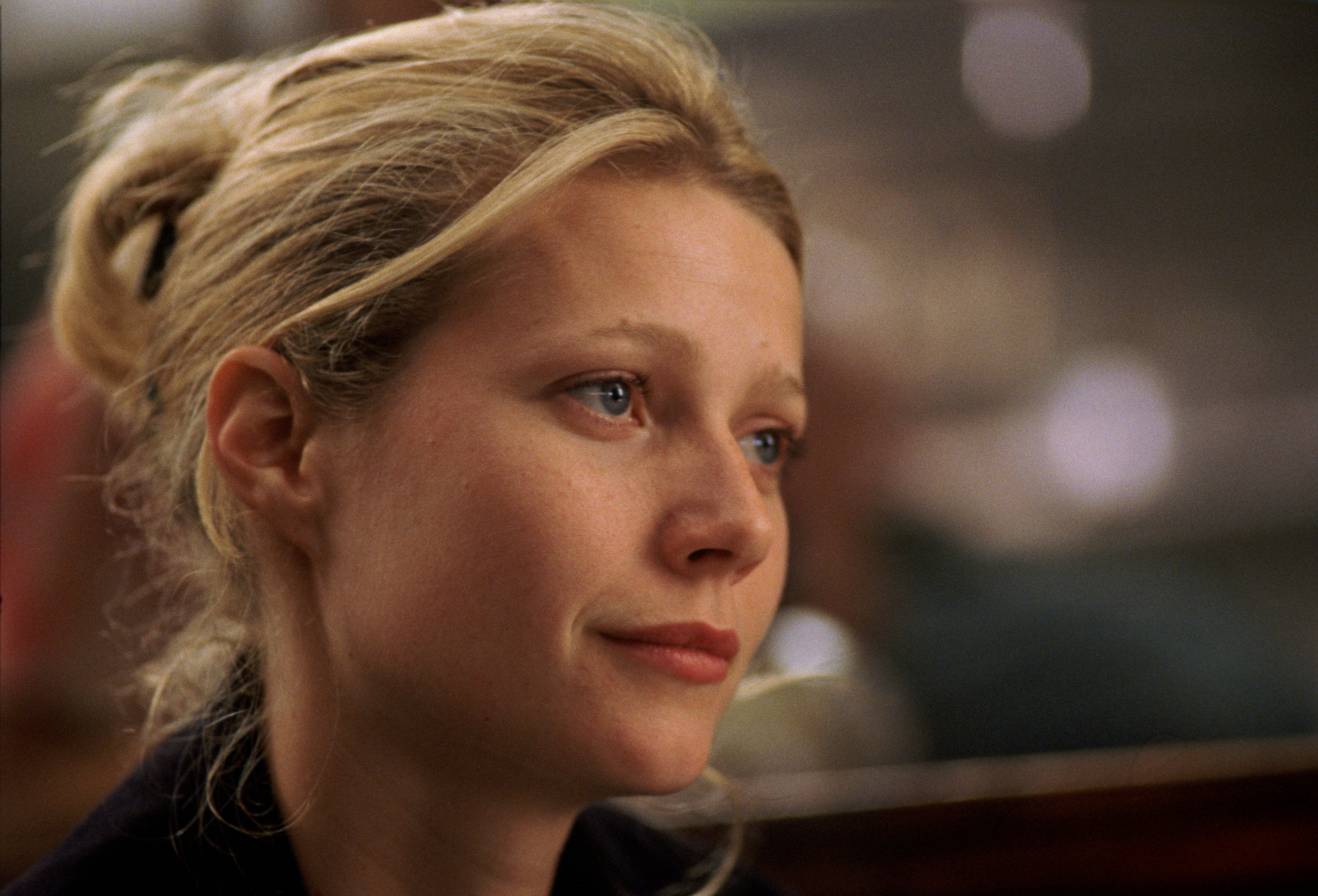‘It was the most evil thing I’d ever read’: How Se7en tore apart the serial killer genre
David Fincher’s disturbing crime drama is about to turn 30. Geoffrey Macnab looks at the making of an unlikely modern classic

Three decades ago, when he made his second feature Se7en, it was as if David Fincher was deliberately taking a hatchet to the traditional serial killer movie. Many other directors had trodden the same bloody path before him, but Fincher’s macabre 1995 classic (which is getting a re-release in January) split the genre wide open, exposing an inner bleakness which other more reticent films had shied away from.
The crucial exchange in the film comes midway through, when grizzled, soon-to-retire detective William Somerset (Morgan Freeman) is sitting in a bar with his hot-headed young colleague, David Mills (Brad Pitt). They’re on the trail of a sly homicidal maniac whose victims all represent one or other of the seven deadly sins. “If he’s Satan himself, that might live up to our expectations, but he’s not the Devil. He’s just a man,” Somerset tells his partner. The implication is clear. The killer is drawn from the same cloth as all of us. We somehow share in his corruption.
Kevin Spacey plays the quietly spoken everyman maniac John Doe, roaming round an unnamed, rainswept city, finding ever more grotesque ways in which to dispatch his victims.
The actor landed the role as the killer in haphazard fashion. Ned Beatty (Network) was reportedly offered the part, but turned it down, telling Fincher the script was “the most evil thing [he’d] ever read”. Full Metal Jacket’s R Lee Ermey also auditioned, and was eventually cast as a police captain. Spacey has claimed he was told another actor got as far as the early filming process – something Fincher has disputed. (Who this actor supposedly was is unclear; one trade report from the time links the role to Amadeus star Tom Hulce.) Whatever the case, Spacey was brought in at short notice, and was on set within a matter of days after being cast.
“I thought it was very dark, but couldn’t have imagined how much darker it would be once Fincher filmed it,” Spacey tells The Independent. “I had no time to prepare for the role. I remember Fincher said to me on the first or second day: ‘I think if you just don’t drool we might get away with this.’ He wanted the character to speak very normally and without acting crazy... but more conversational.”
This was one of the Oscar winner’s most chilling and understated performances. John Doe melts into crowds. In one famous scene, Pitt’s Mills encounters him at a crime scene and shoos him away, thinking he’s an intrusive photographer. Spacey never raises his voice and remains scrupulously polite. He’s very smug, though, someone convinced of his own devilish ingenuity. Towards the end of the film, after he has surrendered to the cops, he is shown in the back of the car with the two detectives, driving out of town to a location where he promises they will find the “envy” and “wrath” victims. Of course, he is playing an elaborate hoax on them.
Freeman by then was already firmly established as one of Hollywood’s most respected character actors, someone with gravitas, charisma and a certain fatalistic quality (also evident in his role as the retired outlaw in Clint Eastwood’s Unforgiven). Perfectly cast, he anchored Se7en, giving it a moral seriousness that defies us to treat Fincher’s foray into Grand Guignol as a mere exploitation picture. Pitt, meanwhile, was at his high point as screen heartthrob after hits including Thelma & Louise and Interview with the Vampire, but was clearly desperate to escape being typecast as the Adonis. Fincher has said that Pitt wanted “to do something raw… that would push him out of his comfort zone”.

It’s easy to forget now the extreme hostility felt toward the movie in many quarters on its first release. It elicited the same disgusted reaction among some reviewers that we can read on the features of Pitt’s young detective hero when he discovers a bucket of vomit at a murder scene. Janet Maslin, critic of the New York Times, was among those utterly revolted by the gruesome visuals.
“The crime scenes are rendered in sickening detail, and the whole film has a murky, madly pretentious tone,” Maslin wrote in an eviscerating review. “Not even bags of body parts, a bitten-off tongue or a man forced to cut off a pound of his own flesh… keep it from being dull.”
Fincher is one of the rare people who is respectful of every piece of material that comes across his purview
The irony is that we rarely witness John Doe in action. We hear in graphic detail about his misdeeds and see the carnage he leaves behind him, but the one murder actually directly shown on screen is committed by a cop. This is notoriously the movie in which Gwyneth Paltrow (playing Pitt’s pregnant wife, Tracy) gets her head cut off. It’s delivered in a box but we don’t see the goopy mess inside.
“It is a very rare filmmaker who will make a movie where Morgan Freeman and Brad Pitt don’t win. And I couldn’t begin to know why audiences are drawn to certain films and not to others,” says Spacey.
Somerset and Mills, meanwhile, always seem to turn up just after John Doe has left his bloody handiwork behind him. The black-and-white crime scene photos aren’t pretty. Nor are the hideously swollen and twisted corpses. Nonetheless, most of the violence is implied rather than depicted directly. Fincher shows such expertise in taking audiences to the darkest places in their imaginations that this still remains a deeply disturbing film to watch.

Andrew Kevin Walker, a young screenwriter then working at the 66th and Broadway Tower Records store in New York, had written Se7en as a spec script. “I cold-called screenwriter (now also director and novelist) David Koepp in LA, who – incredibly – was nice enough to read the script and to recommend it to his agent,” Walker writes on his website.
In normal circumstances, such bleak and gory material would have been very heavily sanitised before it reached the screen. Walker did indeed write multiple drafts, most of them blander than the first stab. Jeremiah Chechik, who had been slated to direct the movie (and was then probably best known for the very un-Se7en-like seasonal slapstick comedy National Lampoon’s Christmas Vacation) certainly wasn’t keen on having the film end with Paltrow’s decapitation. Bizarrely, though, Fincher (who took over the directorial duties) was mistakenly sent the first Walker script. That was the one he wanted to make.
“He [Fincher] is one of the rare people who is respectful of every piece of material that comes across his purview,” Walker told The Hollywood Reporter in a 2017 interview. “He’s not a person that you hand the blueprints to a house and he says, ‘OK, let’s go make this into a boat.’”
The director was embarking on his serial killer movie after one of the most difficult and humiliating experiences of his career, on his feature directorial debut, Alien³. There were so many fights behind the scenes on that production that he eventually disowned it. It wasn’t the film he had set out to make. On Se7en, he wasn’t in the mood for compromise.
For once, the fates seemed to be on his side. When they weren’t, he simply improvised. The constant, pouring rain, for example, which now seems like such an intrinsic part of the film’s Stygian look, wasn’t planned. The weather was lousy and Fincher and his virtuoso cinematographer Darius Khondji took advantage of what could have been a major problem by basking in the murky damp.

One of the enduring fascinations of the film is its mixture of the sacred and the profane – all those high-culture literary and religious references set among scenes of utter horror and depravity. There’s some Bach on the soundtrack, and plenty of nods to Dante and Milton. Formally, the film is hugely impressive. Fincher may have been making a modern US city look like the seventh circle of hell but he does so in very stylish fashion. After all, this was a man who had already made Nike ads and Madonna pop videos.
No one had huge expectations about the commercial prospects of the movie. The version of Walker’s script that Fincher made doesn’t provide anything at all in the way of final-reel consolation for audiences. Spacey’s Doe certainly doesn’t possess the chianti-quaffing charm of Anthony Hopkins’ Hannibal Lecter; he’s chilling precisely because of his banality.
Moreover, killing off Paltrow felt almost like the equivalent then of making a snuff movie with Doris Day as one of the main victims. Tracy is the film’s calmest, most rational, wholesome and likeable character – but even that can’t save her.
For some reason, audiences still lapped up this very bitter and curdled brew. The film was a box-office hit, generating more than $300m in ticket sales – huge numbers for material this extreme.
There was something grimly intoxicating about Se7en, a sense that Fincher was showing us the darkest, ugliest versions of ourselves. It was grisly, sure, but what if the studio had made one of Walker’s watered-down versions instead? Now that would be a deadly sin.
‘Se7en’ is re-released for its 30th anniversary on 10 January






Join our commenting forum
Join thought-provoking conversations, follow other Independent readers and see their replies
Comments